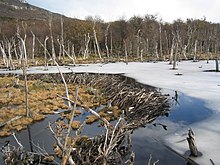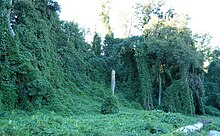non-native organisms that have spread beyond their natural range. disrupting the balance of an ecosystem. ]
An invasive or alien species is an introduced species to an environment that becomes overpopulated and harms its new environment. Invasive species adversely affect habitats and bioregions, causing ecological, environmental, and/or economic damage. The term can also be used for native species that become harmful to their native environment after human alterations to its food web – for example, the purple sea urchin (Strongylocentrotus purpuratus) which has decimated kelp forests along the northern California coast due to overharvesting of its natural predator, the California sea otter (Enhydra lutris). Since the 20th century, invasive species have become a serious economic, social, and environmental threat worldwide.


Invasion of long-established ecosystems by organisms is a natural phenomenon, but human-facilitated introductions have greatly increased the rate, scale, and geographic range of invasion. For millennia, humans have served as both accidental and deliberate dispersal agents, beginning with their earliest migrations, accelerating in the Age of Discovery, and accelerating again with international trade. Notable examples of invasive plant species include the kudzu vine, Andean pampas grass, English ivy, Japanese knotweed, and yellow starthistle. Examples of invasive animals include the New Zealand mud snail, some water fleas (such as Daphnia), feral pig, European rabbit, grey squirrel, domestic cat, carp, and ferret.
Some popular reference sources now name Homo sapiens, especially modern-age humans, as an invasive species, but broad appreciation of human learning capacity and their behavioral potential and plasticity may argue against any such fixed categorization.


